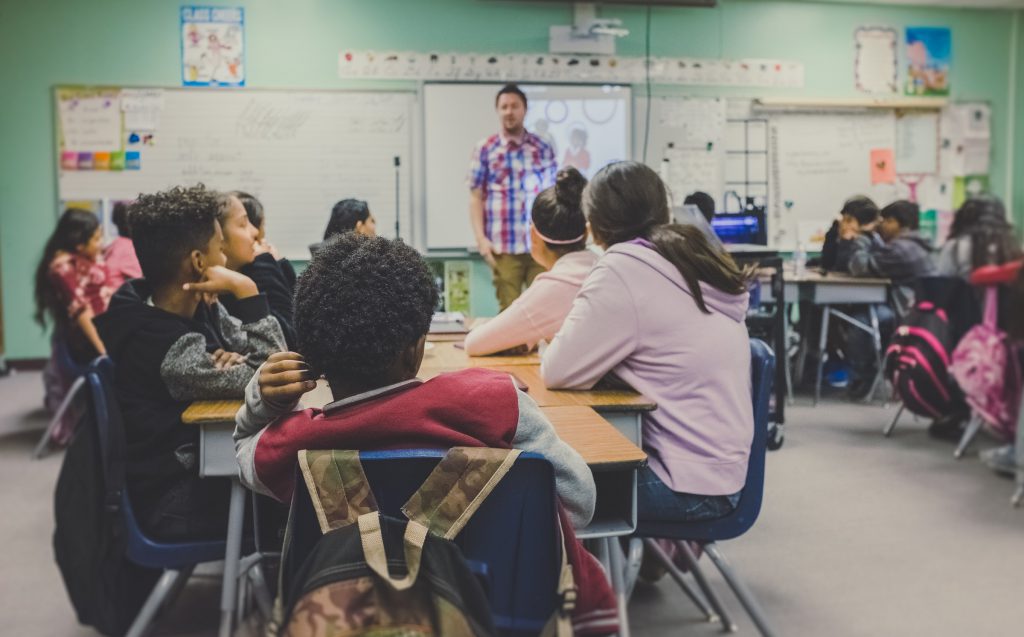Necessity is the mother of invention, and virtual learning necessitated a whole lot of creative thinking by schools and educators.
The shift from the classroom to the computer screen was not a comfortable transition. However, it did lead teachers to adopt new practices and technologies that they’ve since carried with them back into the schoolhouse.
In this piece, we’ll highlight some of these helpful holdovers from the era of virtual learning. Here are three teaching tips that can enrich education whether you’re in the classroom, teaching remotely, or pursuing a hybrid model.
Create video resources that are permanently accessible
In the shift to virtual learning, lots of educators had to get used to teaching over video calls. Many teachers recorded these lessons for future use or even began producing their own short video clips to explain specific concepts.
Eventually, some teachers amassed a small video library of lectures and lessons, which they now continue to make available to students for a variety of reasons. For example, if a student is absent from class one day, they can watch a recording of the instruction they missed. Or, if the student is studying a specific concept, they can pull up a video explainer that will help them better understand or remember it.
Video lessons provide a valuable learning resource for students, while also lightening the load for teachers, who don’t have to spend as much time re-explaining things to students who missed class or need a simple refresher course.
Social studies teacher Ben McCrea told EdSurge that he uploads his self-produced educational videos to Microsoft Teams. Many of the videos provide important supplemental information that students can’t easily find elsewhere.
“I’ve learned to have things available by doing a recording, a screencast, something that is captured for later,” said McCrea. “This is especially valuable for content that’s not available in other digital resources. I have information about the Punic Wars and Hannibal that’s not available in the textbook. It’s just something that I’ve studied a lot.”
Continue taking advantage of other new technologies
Video conferencing may be the most prominent feature of virtual learning, but it’s not the only technology that’s been more widely adopted due to the pandemic. There are lots of tools that enable remote learning, and many of them can continue to serve a function in a physical classroom.
An article for The Washington Post highlighted several ways that “pandemic tech” has “changed [teachers’] jobs forever”:
“During the pandemic, some teachers have created YouTube videos that students can watch when they need help with a lesson. They’re using Google Forms to give students a quick and easy way to submit assignments. Others are using Whiteboard.fi, which gives students individual digital whiteboards, game website Math Playground for math competitions, and online learning tool Quizlet to make custom sets of virtual flash cards.”
Various apps and websites are making it easier for teachers to collect assignments, create study materials, and gamify mathematics and flash cards. Educators should continue to experiment with new technologies that can enhance the learning experience.
Make room for more one-on-one conversations and small group discussions
When they had to adapt to virtual learning, many teachers discovered that a video conference call is not conducive to a lively classroom experience. Educators would ask a question, and instead of seeing several hands shoot up, they’d be met with the silence of two dozen students on “mute.”
To get more engagement from their students, many teachers started doing one-on-one meetings with their students, which helped them open up. Now that they’re back in the classroom, the teachers say their students still benefit from more one-on-one time.
Robotics teacher Aaron Moiso told EdSurge that during the days of virtual learning, “I had a lot more one-on-one interactions instead of full class. Some students found it really helpful. Even now, students will contact me online, and we’ll do one-on-one sessions.”
Having smaller, more intimate conversations can also be good for classroom discussions. According to Education Week, high school English teacher Jasara Hines discovered the benefits of smaller group discussions during remote learning:
“Hines, from the Chicago area, cut down on the number of students she put in breakout rooms from five to two or three, after having trouble getting students to engage in conversations in the bigger groups. The smaller groupings made the teenagers less intimidated to unmute and contribute, Hines said, and they also lowered the chances that one or two students would dominate the conversation while the others stayed silent.”
Give students a space to vent
We’ve talked before about how COVID is super-charging teacher burnout (and what can be done about it). But the pandemic is obviously also taking a toll on students.
As pressures from Covid and other real-world tragedies mount, teachers have learned that it’s important to provide their students with an emotional outlet.
According to EdWeek, high school theater teacher Sumner Bender has “invited students to share with her the small things that are bothering them that they feel like they don’t have any control over right now.” One student talked about a personal problem, then expressed guilt that he was complaining about something so trivial in light of a recent disaster. Bender reassured the student, “That doesn’t mean that what you’re going through needs to be minimized.”
The future is worryingly uncertain, and many classrooms that are currently in-person may need to shift back to virtual learning at some point later. But by implementing some of the practices and technologies above, teachers will be better prepared to pivot back to remote learning (or a hybrid model) if needed.








